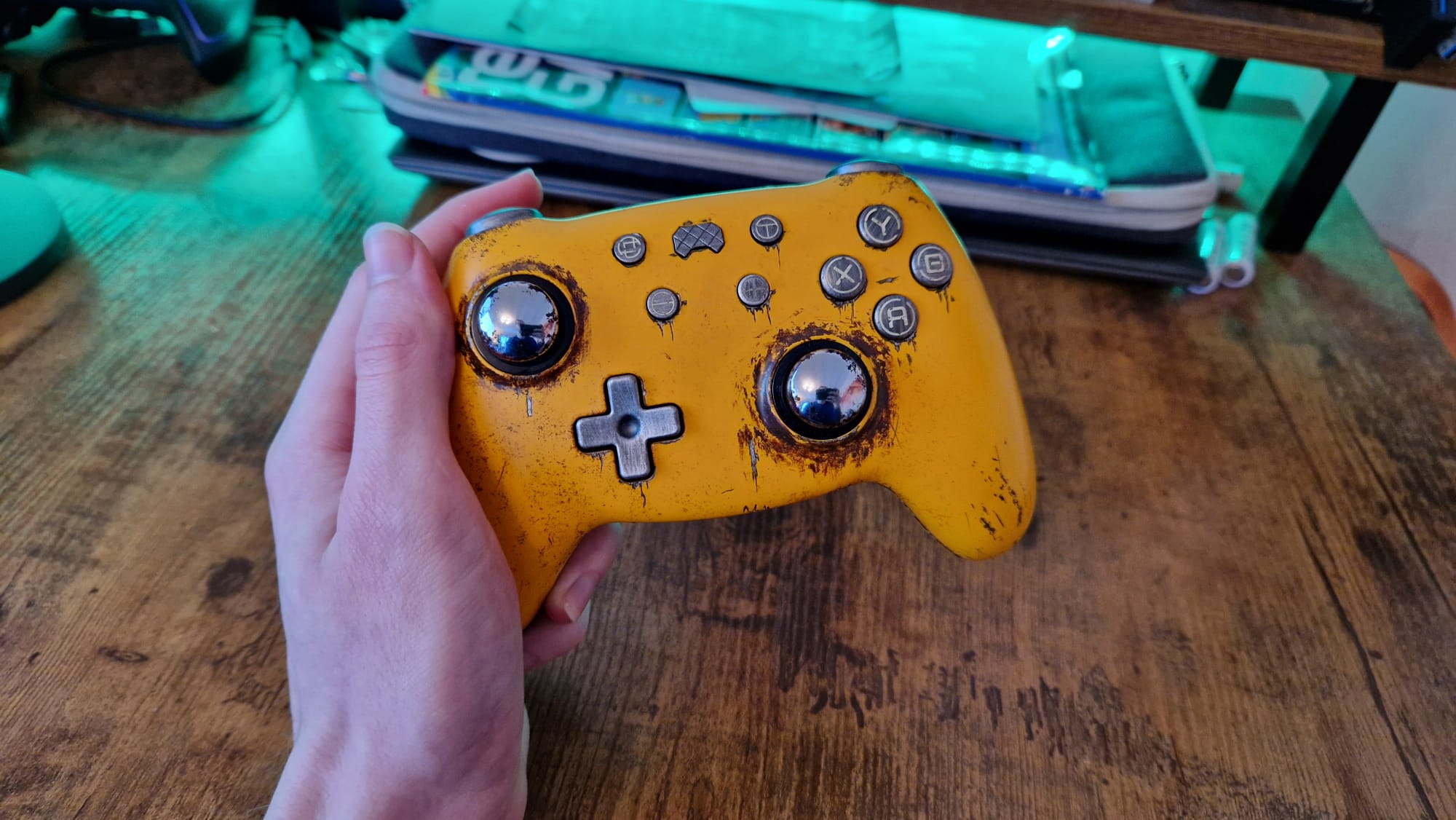
My job as a controller reviewer is usually to look for gamepads with the highest number of pro features for as little cost as possible. But while reviewing the PB Tails Crush Defender, I feel like I have to do things a bit differently. This isn’t a controller that’s trying to give you the best Esports performance, ergonomic back buttons, and advanced customization software. One look at it will immediately make that clear.
So if it isn’t making a play for the top of our best PC controller list, what’s the point? Well, let’s ignore the fact that not everyone needs the latest and swankiest pro controller. The PB Tails Crush Defender is a landmark gamepad that signals a turning point for this fabled gaming peripheral. It’s the first to feature TMR thumbsticks, which is an upgraded form of Hall Sensor technology that other manufacturers will, in all likelihood, widely adopt in 2025.
This is a controller that’s earned a place in museums of the future for that alone. Its rusted, metallic design seems self-aware of that, like it’s playing into its antique appeal. For $109.99 / £92, it costs more than some pro controllers, though. So what are you looking for? The elite design of an Esports pad, or a timepiece that could be the crown jewel of your controller collection?
Design
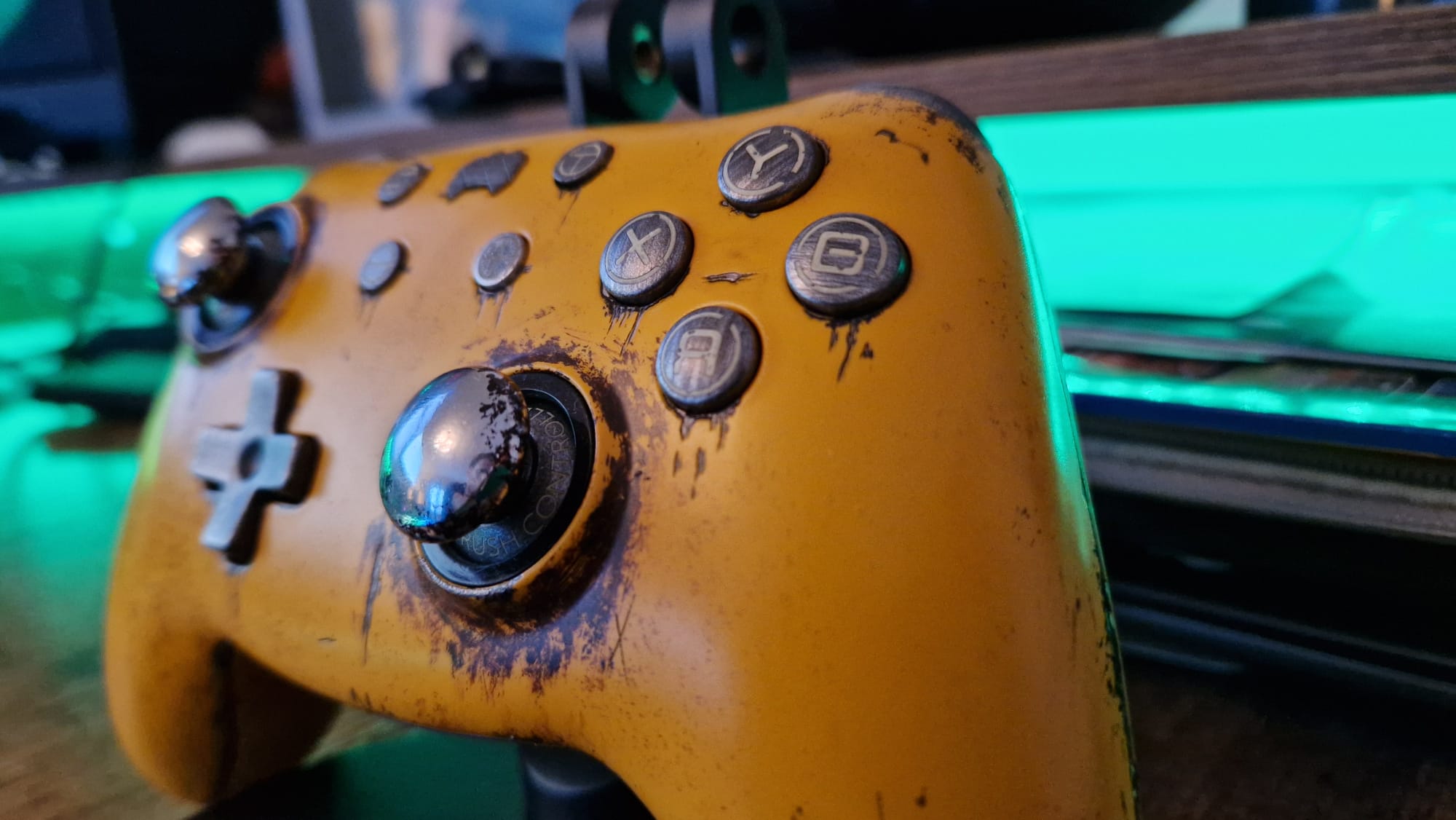
You can’t deny that the Crush Defender has a look like no other, but what’s not immediately obvious is that each one made is truly one of a kind. The controller has a metal body that’s hand-finished with tiny dents, scratches, and its own unique deformities. It looks like something pulled straight from the world of Borderlands, and I mean that as a compliment of the highest order. As a controller, it feels like it already has a backstory and a character of its own from the moment you unbox it, a bit like the Skywalker lightsaber does when it’s passed from character to character. These tiny bits of aging aren’t just a coat of paint everyone else will find, but authentic, hand-crafted scars for just your model that make it just yours.
On another note, the shape of this controller is also distinctive. It’s not like other controllers that release these days that are clearly all drawn from the same five, tried and tested molds. The shape of the Defender was inspired by, of all things, a car. The Porche 550 Spyder is known for its elegant curves and smooth metalwork. Its headlights are these perfect circles that look almost out of place on such a non-formulaic body. The thumbsticks here stand out in the same way, reflecting back at you like a mirror thanks to their silver hue.
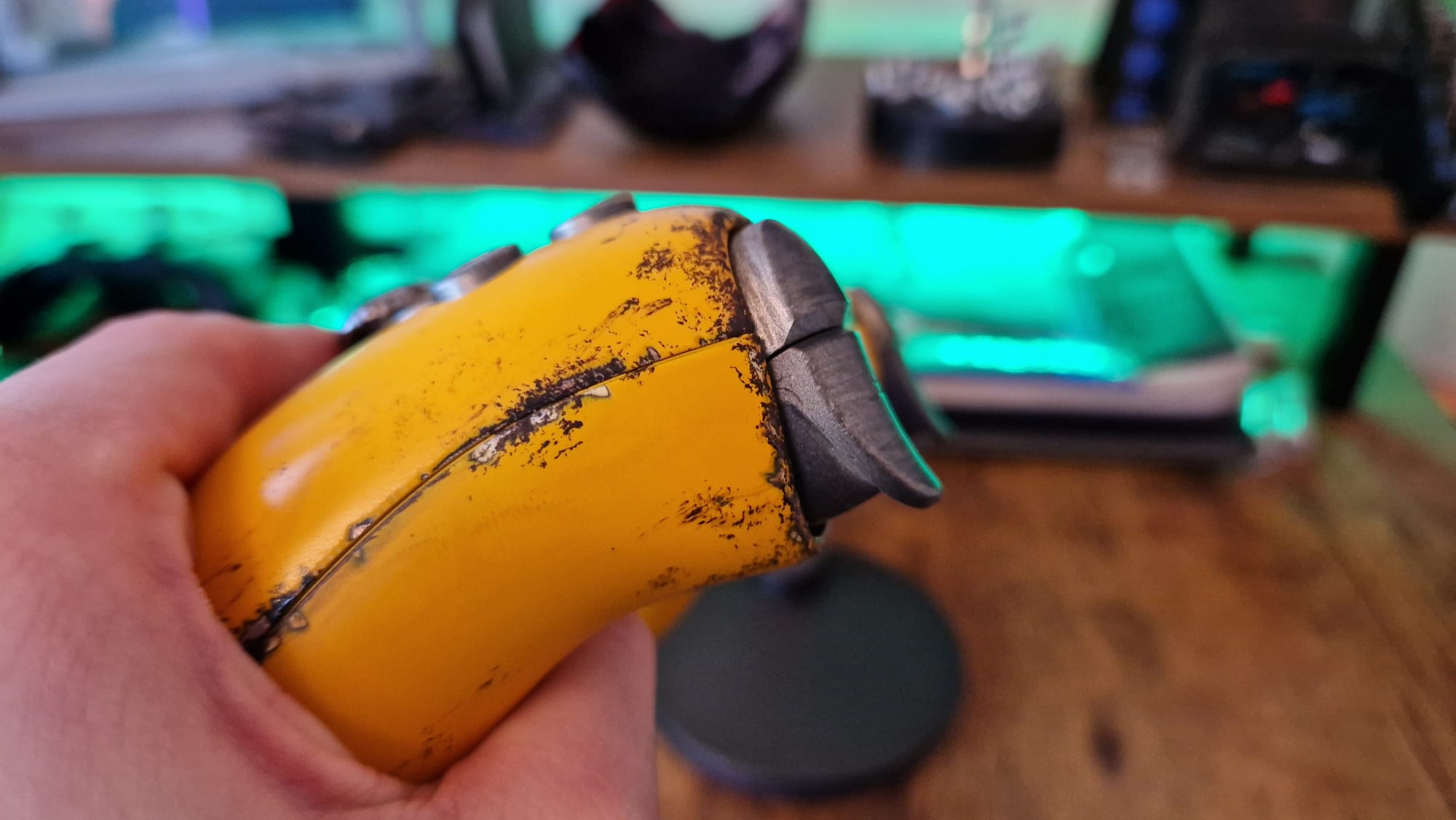
The full metal jacket of the Crush Defender adds so much to the feel of flicking a thumbstick back and forth. Each push and pull sends a deep, reverberating rumble through your hands. Usually, that would be a bad thing, making a gamepad feel cheap, but because of sturdy metal build quality, it feels like a baked-in piece of engineering to enhance the feel of your games.
The Crush Defender held its own when playing Celeste. The hefty weight and excellent feel of the pad gave each jump and dash so much power.
The triggers are perhaps the part of the Defender that benefits the most from the metal design. They clack down with authority and remain cool to the touch no matter the intensity of your session. Unfortunately, these also experience drawbacks too. As badass as each trigger pull feels, it’s slightly ruined by a squeak that emanates when you release one.
The back of the controller has a superb shape to it. So much of the time grips on a controller end as soon as you get to one’s spine. The indented, circular shape you wrap your fingers around just stops because you can instead grip the back of the product. With the Defender, you get this exceptional groove all the way up to the triggers, which really helps it to feel comfortable in the hands.
Features
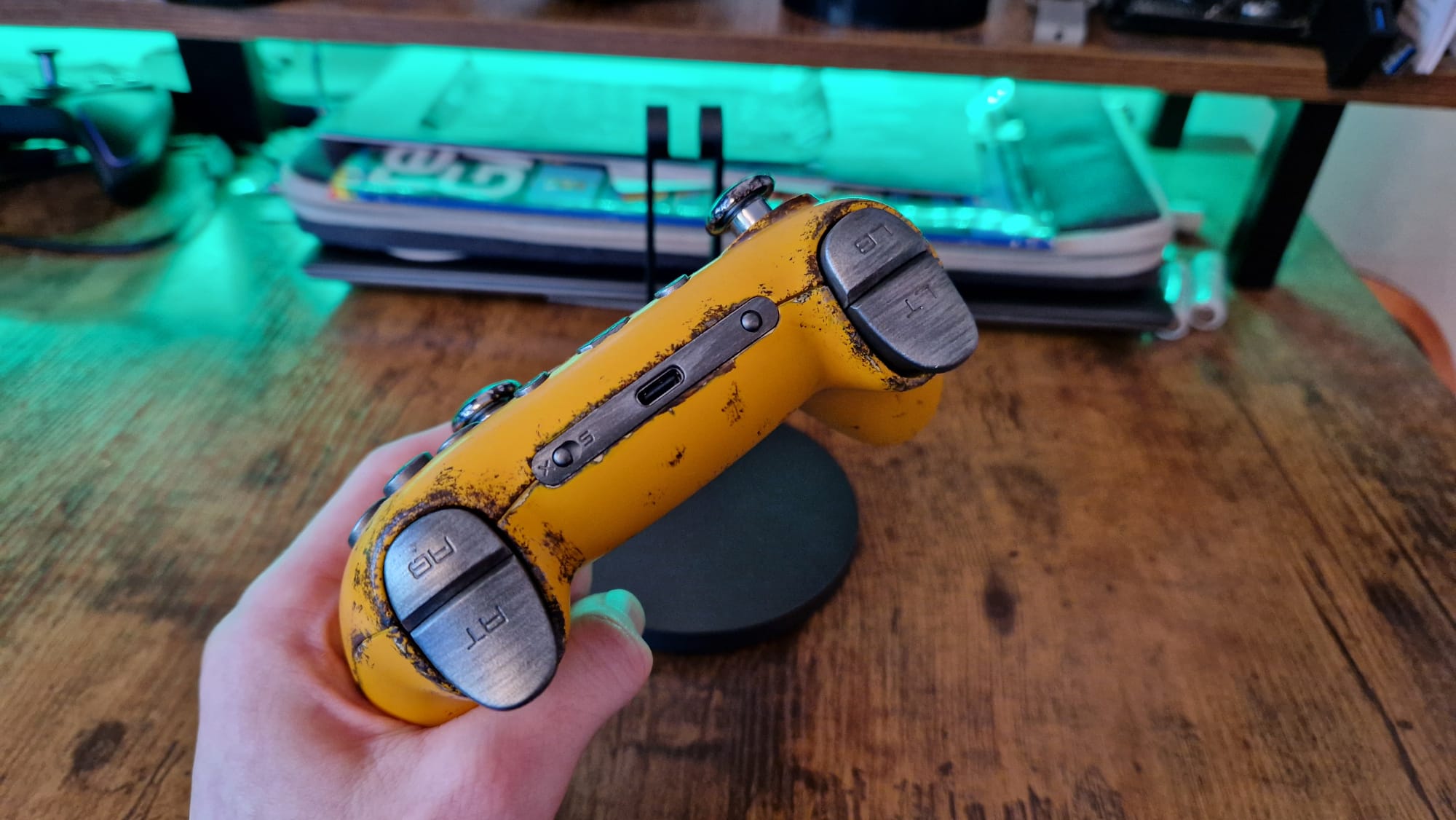
The PB Tails Crush Defender is late to the party, but it can be counted among the best Nintendo Switch controllers. It also works with Windows, SteamOS, Apple, Android, and the Rasberry Pi. It can connect wirelessly via a 2.4G USB dongle that comes in its case, or with a USB-C to USB cable that’s also included. There’s even Bluetooth support, so there are plenty of platforms and uses for the Defender to make the most of.
The one bit of physical gaming flair it features is its RGB light bar, and you have the option to customize this using six on-board profiles. Additional function buttons can be found on its face which help you to control these, and the pad’s deadzone settings. There’s no app or software to help you in this regard, and for a controller with no back buttons to speak of, I can’t help but feel like some customization software could have been the one Esports draw the PB Tails team could have granted.
Just in case you want some motion control for games on the Switch, the Defender packs a 6-Axis sensor. In addition, it features a turbo mode, so if you’re sick of tapping minigames or quick-time events, they have a counter. There’s an 860mAh battery inside too, which supplies around 8-10 hours of wireless life.
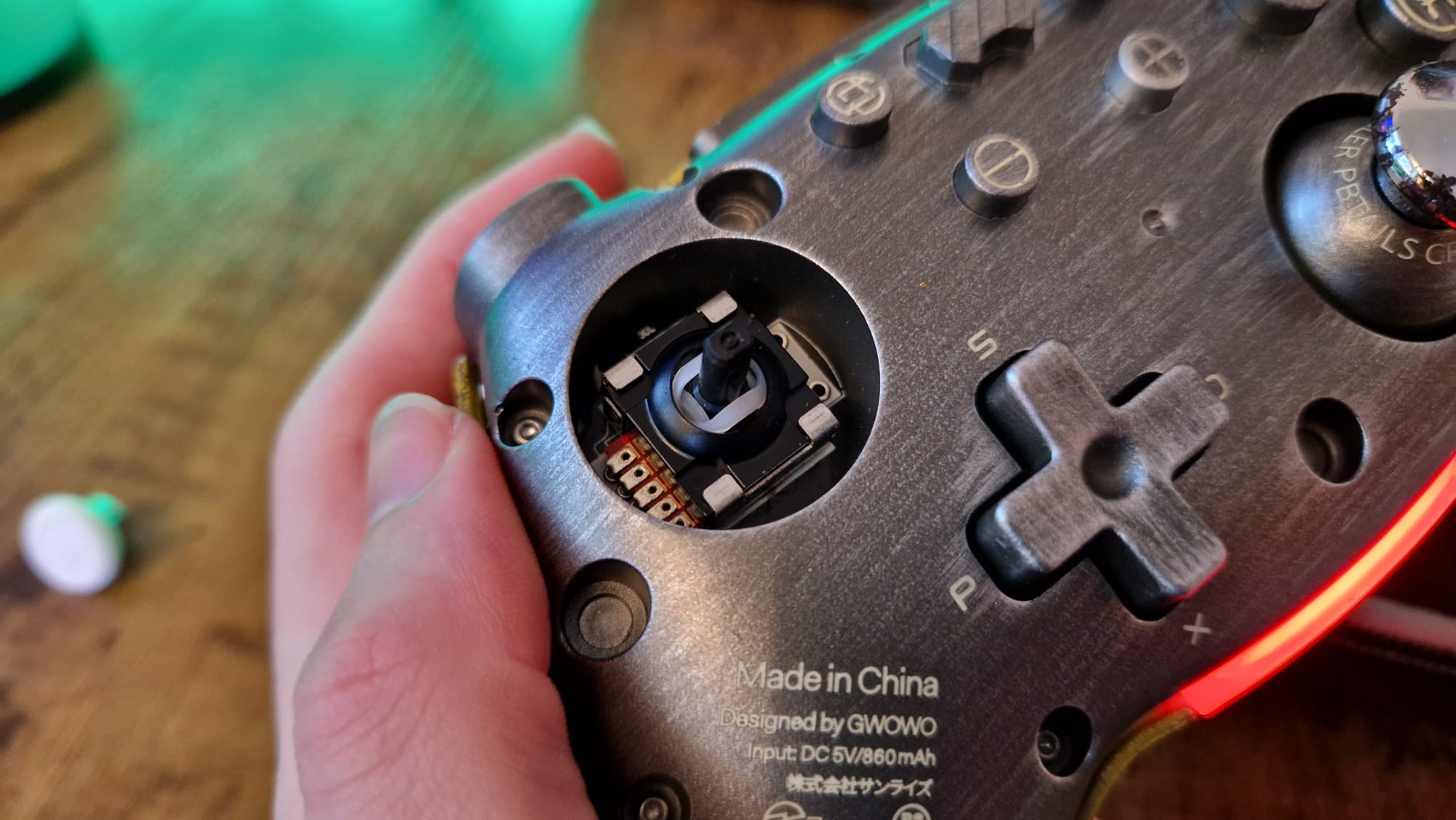
Of course, the main selling point here is the TMR technology in the thumbstick modules. As you may know from almost every controller adopting them in the last few years, Hall sensor thumbsticks use tiny electromagnets to measure stick movements. They provide a much more accurate controller input than traditional potentiometer sticks and don’t have any physical components that wear down over time, so drift isn’t going to be a problem.
TMR stands for Tunneling Magnetoresistance, and it takes what’s great about Hall Sensors and kicks it up a gear. In the same way that 4K massively expands the number of pixels on a display compared to 1080p, TMR sensors can register around 10 times as many positions on an axis as Hall ones like the GameSir G7 SE. They’re also faster, reporting their positions at up to 20,000Hz. The PB Tails Crush Defender only has a polling rate of 1,000Hz, and while I don’t think we’ll see most controllers reach past that any time soon, it’s why I think this joystick tech will likely be what’s used in Esports gamepads of the future.
Performance
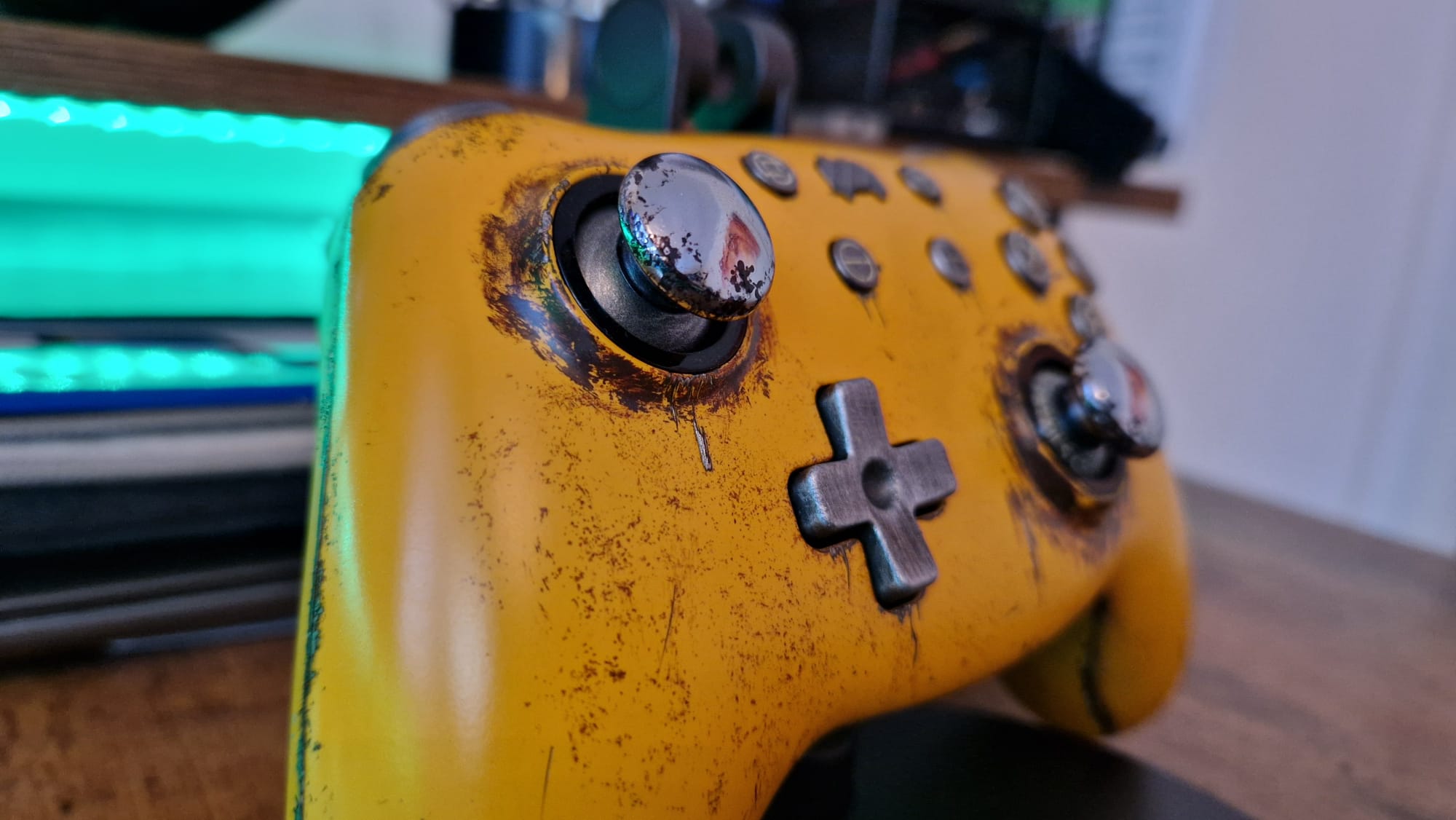
I hate to say it, but in many ways, elite TMR thumbsticks are wasted on a controller like this. I want to make it clear that the Crush Defender is one of the most unique and comfortable controllers I’ve ever been sent to test, but a performance controller it is not. There are functional issues with its design that are hard to get past, even if I’m giving it the benefit of the doubt for not necessarily trying to be a “pro” controller.
It’s not trying to be the next pro-level sensation to rival the Victrix Pro BFG for Xbox, it’s trying to remind you that no matter how advanced the technology inside a controller gets, we should remember where it all started.
The thumbsticks do have swappable tops, although to change them out for the rubberized ones that come in the case you first need to pry off the metal faceplate, then somehow wrestle the metallic stick tops out of their guard. It’s not an easy process, one not something PB Tails accounts for in its instruction leaflet. Either way, if you plan to use this pad for intense gameplay, I think this feature will be a must. The metal surface of the sticks has a domed shape, which matches the rest of the Defender’s look, but is a massive problem when gaming. The second your thumbs start to produce heat they will slip off the sticks so fast you’ll begin to hear that canned whistle sound used by cartoons. That can make precise movements really tricky, so this isn’t exactly the pad I’d use for sweaty sessions of Hunt: Showdown - even if flick aims in Straftat are horrendously satisfying.
The face buttons have a really nice feel to them - imagine a DualShock 4 if the traditional PlayStation buttons were made of metal and had the symbols engraved into them. On the whole, rumble and feedback here make the Turtle Beach Stealth Ultra feel like a Hasbro toy. Great feel is hamstrung by a lack of responsiveness though. Swapping between the Razer Wolverine V3 Pro and the Crush Defender during sessions of Dragon Ball: Sparking Zero was actually really difficult because the speed allowance of both controllers couldn’t be more of a polar opposite. Razer’s mechanical and microswitch buttons are like wielding lightning, but with the Defender I felt like I was moving in slow motion.

It’s not like what PB Tails has built is unusable though, and I want to make that clear. Besides the aforementioned thumb slips, the Crush Defender held its own when playing Celeste. The hefty weight and excellent feel of the pad gave each jump and dash so much power, and the slippy feeling somehow made me more aligned with my in-game avatar. As they started losing their grip on the cliff they were holding onto, I too started feeling my accuracy slip away due to perspiration.
It also can’t be denied just how comfortable a controller this is. It makes it all the more tragic that there are no back buttons because building them into the fantastic shape of this pad’s grips would have added so much utility. As it stands, the Crush Defender is at its best in cozy games where intensity is low, or in cinematic experiences like Indika.
I did notice that recording footage for videos felt great with the Defender. TMR tech really makes slow camera pans easy because even a small hint of a nudge was registered at the speed I wanted. On that note, in FPS games that didn’t require too much precision, the Defender worked great. We Happy Few felt like it was being played on the ideal controller because all those attempts to copy BioShock went hand-in-hand with a nostalgic gamepad.
Should you buy the PB Tails Crush Defender?
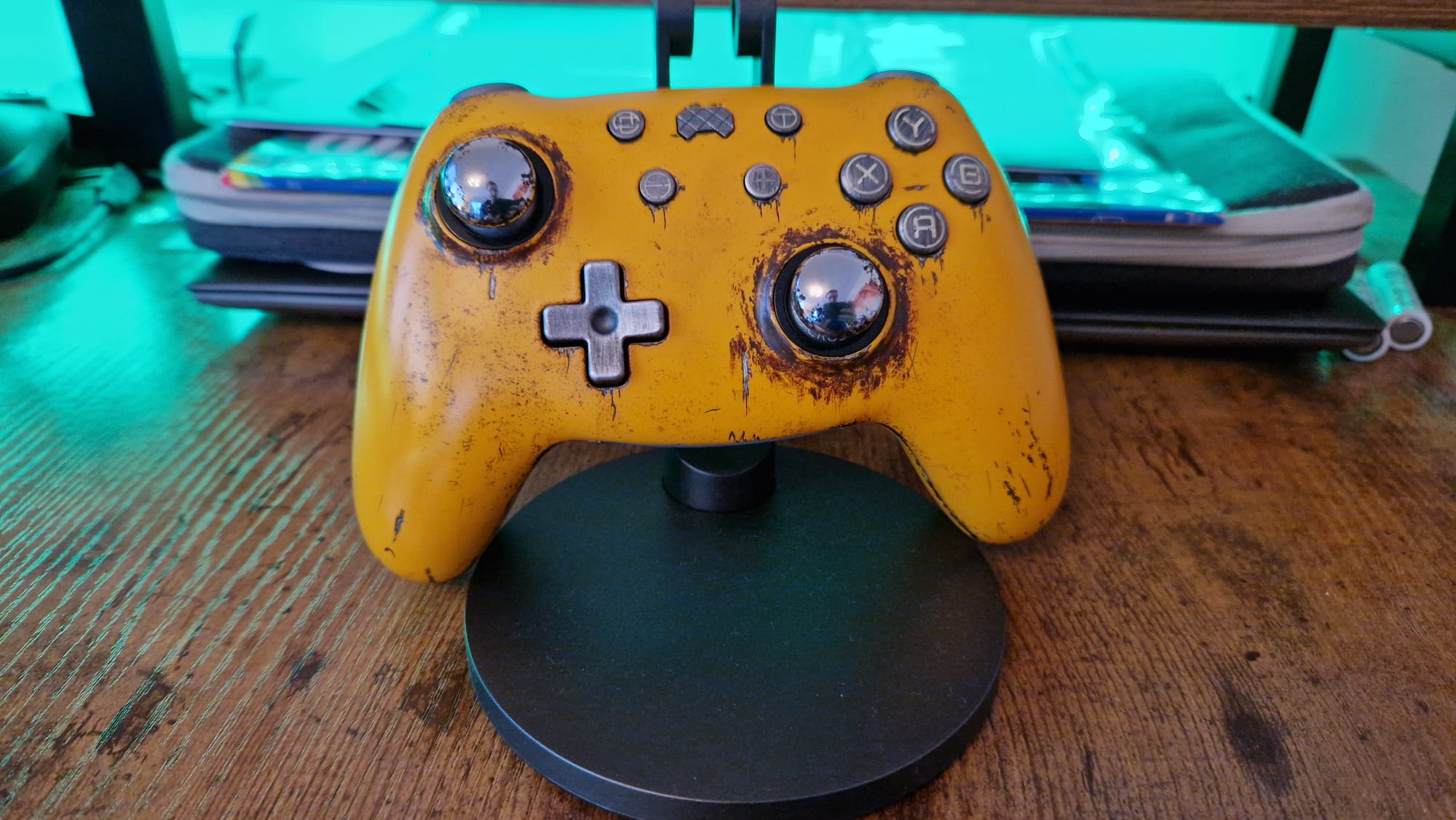
One of my favorite controllers of all time is the DualShock 4 - even to this day. It doesn’t have pro features, back buttons, or really much that stands up to the best PS5 controllers today. But it has undeniable levels of comfort, feel, and it does the basics of what a controller should do, and does them really well. The PB Tails Crush Defender feels like a progression of that type of gamepad.
It’s not trying to be the next pro-level sensation to rival the Victrix Pro BFG for Xbox, it’s trying to remind you that no matter how advanced the technology inside a controller gets, we should remember where it all started. It’s just a shame this minimalist attitude didn’t translate to substance over style, because as solitary as the Defender’s design is, small mistakes like slippy, domed thumbsticks make no sense. For some, I bet squeaky triggers will be a step too far.
Again, let me ask you what you’re looking for in a controller. The PB Tails Crush Defender isn’t cheap, and you could get a fully fledged pro controller like the PowerA Fusion Pro for less than this. If you want something a bit quirky for the once-in-a-while controller session though, and you want a collector’s item that you’ll treasure for years to come, nothing has the PB Tails Crush Defender beaten.
How I tested the PB Tails Crush Defender
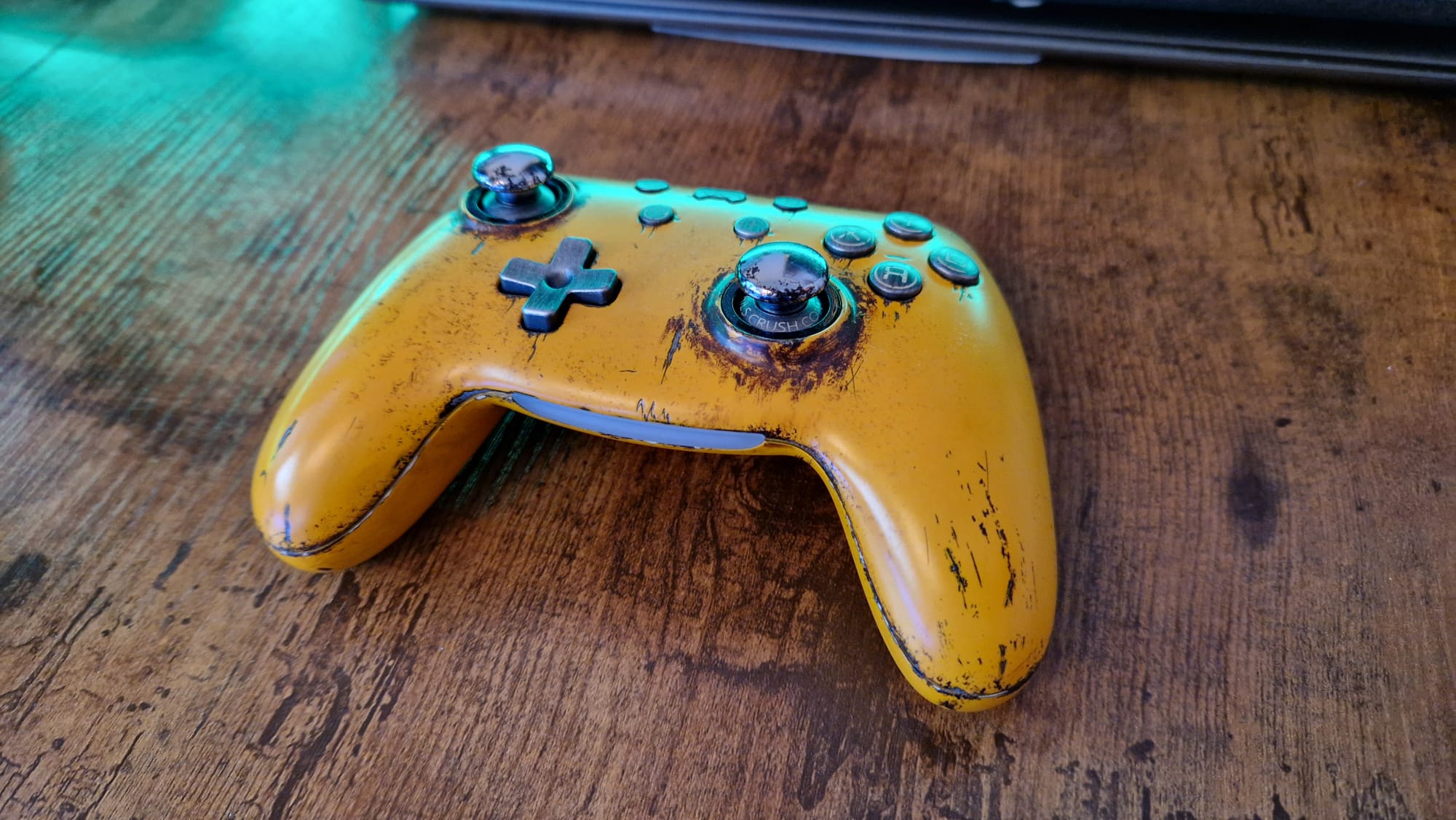
I spent a number of months with the PB Tails Crush Defender before writing up this review. I’ve had a great time testing it with slower, more cinematic games like Indika and Pools.
To test its FPS prowess, I spent time with it in Hunt: Showdown and STRAFTAT, but it didn’t really compare with my experience using other pro controllers in this genre. In slower single-player FPS games, it wasn’t unusable. Playing We Happy Few felt quite nostalgic, and since precise aiming isn’t the biggest aspect of that game, it worked better.
I compared the Defender’s speed with the Razer Wolverine V3 Pro because I tested both controllers alongside one another. In Dragon Ball Sparking Zero I felt as though the Defender was really lacking speed and responsiveness, although time playing Celeste did make me more optimistic about that.
For more on how we test controllers, check out the full GamesRadar+ Hardware Policy.
There’s more where that came from! Take a look at the best joysticks, the best Xbox Series X controllers, and the best racing wheels for PC.







